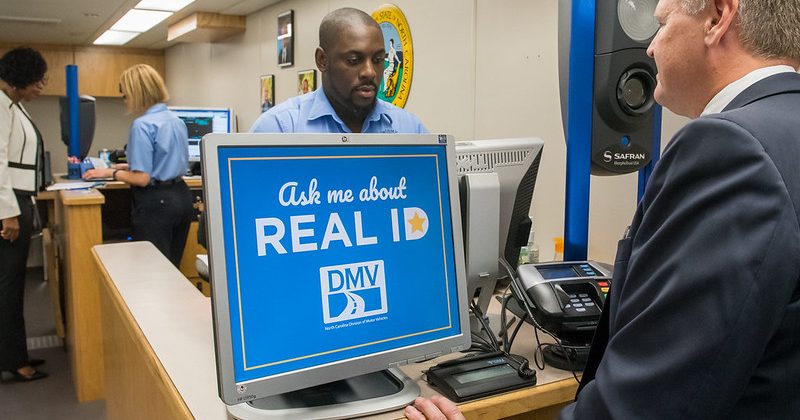 Last year, motor vehicle agencies (DMVs) started sharing concerns that too few residents were acquiring REAL IDs in time for the October 2020 deadline. While the deadline was pushed back to October 2021 due to COVID-related closures, local DMVs continue to struggle with REAL ID adoption.
Last year, motor vehicle agencies (DMVs) started sharing concerns that too few residents were acquiring REAL IDs in time for the October 2020 deadline. While the deadline was pushed back to October 2021 due to COVID-related closures, local DMVs continue to struggle with REAL ID adoption.
Currently, 40% of Americans report they don’t yet have a REAL ID and 57% of Americans are unaware of the deadline or the possible impact it could have on potential travel plans. But as more Americans become aware of the new requirements in coming months, DMVs will inevitably become inundated with customer inquiries. While this surge of service requests may present a challenge for DMVs, it is also an opportunity to drive digital transformation and radically improve customer experience.
Agencies can take the following steps to deliver this transformation:
- Build awareness about REAL ID and improved digital services.
- Manage and automate REAL ID inquiries through modern channels, such as Live Chat, Facebook Messenger and Twitter direct messages (DM).
- Understand the real-time voice of customer feedback to improve services.
- Continually maintain transparency with DMV customers.
Step 1: Building awareness
There is currently an awareness gap about REAL ID, so DMVs will need to accelerate their outreach. Agencies should consider sending targeted, personalized advertisements to drive understanding about the REAL ID initiative.
There are numerous benefits to advertising initiatives on social media, rather than traditional media like print or television advertisements. First, social media advertisements are more effective, delivering personalized advertisements and leading to increased interest. Marketers leveraging social advertising cite an 88% increase in conversions due to enhanced personalization. Second, social advertising facilitates actionability, allowing customers to click on advertisements, bringing them to website pages where they can find more information about REAL ID or schedule an appointment. Because social media integrates messaging functionality into posts — including advertisements — customers are able to reach out digitally to ask questions, providing a more scalable alternative for customer support than legacy telephone hotlines.
Step 2: Managing inquires at scale
As more customers see REAL ID advertisements and recognize the urgency around the October deadline, they will begin contacting the DMVs to ask questions and take necessary action.
Increasingly, Americans are turning to digital channels as their preferred method to contact government agencies. Nearly 50% of millennials and over 60% of Gen Z customers cite web chat and social media as their preferred contact method. Agencies should encourage and promote this shift by adopting modern channels to service customer inquiries.
Transitioning to digital channels for customer support will help improve the customer experience for customers and simultaneously reduce costs for the agency. Based on a recent study by McKinsey of government agencies, providing digital alternatives for customer service leads to an improved CSAT score. Second, resolving customer inquiries on digital channels lowers the cost per interaction because digital channels facilitate automation, such as chatbots. As customers reach out on digital channels about inquiries, many FAQs can be addressed by a bot, freeing agents to answer more nuanced challenges. Furthermore, operating customer service on digital channels allows agents to simultaneously service multiple requests, allowing fewer agents to help more customers. Another study by McKinsey demonstrates that customer e-service costs are just 56% of traditional call center costs.
Step 3: Listening to customers
After experiencing DMV services, some customers will want to share feedback. The most holistic approach to capturing customer feedback is through social listening. DMVs can leverage social listening insights from digital channels like Twitter, Facebook, Reddit, Instagram and many other online sources to assess where service breakdowns are occurring and provide iterative improvements to the overall customer journey
More than any other solution — including surveys — social listening is able to capture the voice of the customer during every step of the customer journey. While surveys often miss customers who are unable to complete an interaction (i.e. a customer who calls the DMV hotline and is placed on hold, but never reaches an agent), social media allows customers to document failed interactions (i.e. the same customer who cannot connect to an agent can share their poor experience on social media). Second, social listening helps organically uncover pain points in the process that may not have been previously considered by formal customer feedback solutions (i.e. a survey that does not ask about parking lot issues may not be aware parking is a major challenge). Social media allows customers to organically share free-form concerns (i.e. a surge of customers sharing tweets about a parking lot issue many indicate the need for overflow parking).
Step 4: Maintaining transparency
Once DMV customers recognize their agencies are active on modern channels, DMVs should continue using social media for their primary method of outreach. Deploying organic social content is the most scalable way to provide timely, relevant updates to customers. Maintaining a continuous dialogue between agency and customer can reduce long-term costs for informing citizens about new initiatives and foster an environment of transparency between citizens and state agencies.
Moving beyond the REAL ID initiative, DMVs can be confident that their audiences will turn to modern channels to find their information. According to a Pew Research Center study, 72% of Americans were using social media to consume, engage and share content. As more Americans continue shifting their approach for consuming information, DMVs will need to reshape their communications approach to effectively reach customers.
Conclusion
The push toward REAL ID is a major opportunity for DMVs to rethink how they communicate with their audiences. While many government agencies will use modern channels to occasionally deploy important updates, there is much room to evolve. By promoting messaging through social advertising, addressing inquiries through digital channels, listening to the real-time feedback of customers and deploying salient updates, DMVs will be able to fundamentally improve customer satisfaction.
Doug started his career as a middle school algebra teacher in Oakland, CA with Teach For America. During his two years in the classroom, he developed a passion for education and the public sector. He then moved to an educational technology company to help drive digital transformation in urban districts. His focus became improving implementations that were struggling to adopt the adaptive learning technology. After completing his MBA at Cambridge University, he began focusing more acutely on customer experience, deploying CX software for federal agencies and Fortune 50 companies. During his time there, he saw the power of synthesizing unsolicited feedback on modern channels, such as Twitter, Instagram and Facebook, to drive positive change for citizens, so he decided to transition into a Solutions Consulting role to help build Sprinklr’s Public Sector practice.





I appreciate your emphasis on using modern channels like social media to raise awareness about REAL ID!